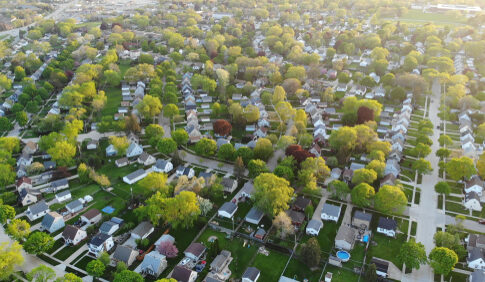Russia has shut down airspace and internet connectivity in several regions as Ukrainian drone attacks intensify, disrupting civilian life and testing Moscow’s defense capabilities. Internet access has been intentionally disabled in five Russian regions in order to disrupt drone control links. According to the Russian Defense Ministry, nearly 500 drones have been shot down in the last 72 hours.
Airspace closures are widespread across Russian regions.
Russian authorities have implemented the “Carpet” plan at multiple airports, including Kaluga, Grabtsevo, Kubinka, and Yermolino, as drone threats escalate. The airspace over the Tula region has been completely closed as a security measure, with similar restrictions appearing in other regions. These closures follow multiple waves of Ukrainian drone strikes that have targeted Moscow and surrounding areas. The restrictions have created significant disruptions for commercial aviation, with flights at Moscow’s Vnukovo, Domodedovo, and Sheremetyevo airports facing severe delays or cancellations.
Russia’s Defense Ministry has reported intercepting at least 182 drones across 11 regions in the most recent wave of attacks, with a claimed total of 485 drones brought down over a 72-hour period. Moscow Oblast alone has seen 63 drones intercepted, according to Russian officials. The scale of these attacks appears to be the largest since March, requiring an extensive defensive response that has impacted normal operations across a significant portion of western Russia.
Three Ukrainian drones paralyze more than half of Russian air traffic. Moscow airports are in chaos, mobile communications are periodically cut off, there is no Internet. Everyone admires the “carpet” plan. pic.twitter.com/pBgKvbSfPQ
— Ukraine Front Line (@EuromaidanPR) May 22, 2025
Internet Blackouts as Defensive Strategy
In addition to airspace closures, Russian authorities have taken the extraordinary step of shutting down mobile internet service in multiple regions, including Oryol, Tula, and Vladimir. These shutdowns appear to be a direct countermeasure against the drone threat, as many modern drones rely on internet connectivity for navigation and target acquisition. The deliberate disruption of communication services represents a significant escalation in Russia’s defensive posture, acknowledging the technological sophistication of the drones being deployed against their territory.
Military expert Anatoly Matviych has explained that disabling mobile internet directly disrupts drones’ ability to accurately position themselves and strike intended targets. The strategy appears to be effective, though it comes at the cost of significantly disrupting civilian communications and business operations. Regional governors have publicly asked for citizen understanding regarding these measures, emphasizing that safety concerns outweigh the inconvenience of temporary communication blackouts.
⚡️ Large-scale mobile internet disruptions due to drone strikes in Russia, — local media reports.
The connection was cut off in the Moscow region, Tula, Saransk, Vladimir and Lipetsk regions.
The authorities of Lipetsk region stated that the restrictions were related to the… pic.twitter.com/FROrGY4XWt
— BLYSKAVKA (@blyskavka_ua) May 21, 2025
Civilian Impact and Infrastructure Damage
The drone attacks have resulted in multiple explosions across Russian territory, with civilian casualties reported in several areas. In Tula, which has been under what officials describe as an “air threat regime” for over 35 hours, authorities have confirmed civilians received injuries from falling drone debris. The sustained nature of the attacks has forced the shutdown of some industrial facilities, including the Strela defense plant in the Bryansk region, which temporarily halted operations due to the air threat.
A Ukrainian Telegram channel has claimed strikes specifically targeted NPO Bazalt, a major ammunition producer in Moscow Oblast, suggesting these attacks may be part of a coordinated strategy to degrade Russia’s military-industrial capacity. While Russian authorities have not confirmed specific targets, the geographic distribution of drone interceptions indicates a broad assault on multiple strategic locations. These developments occur as President Donald Trump has announced the resumption of direct talks between Russia and Ukraine, though the Kremlin has stated there are no set deadlines for such negotiations.


